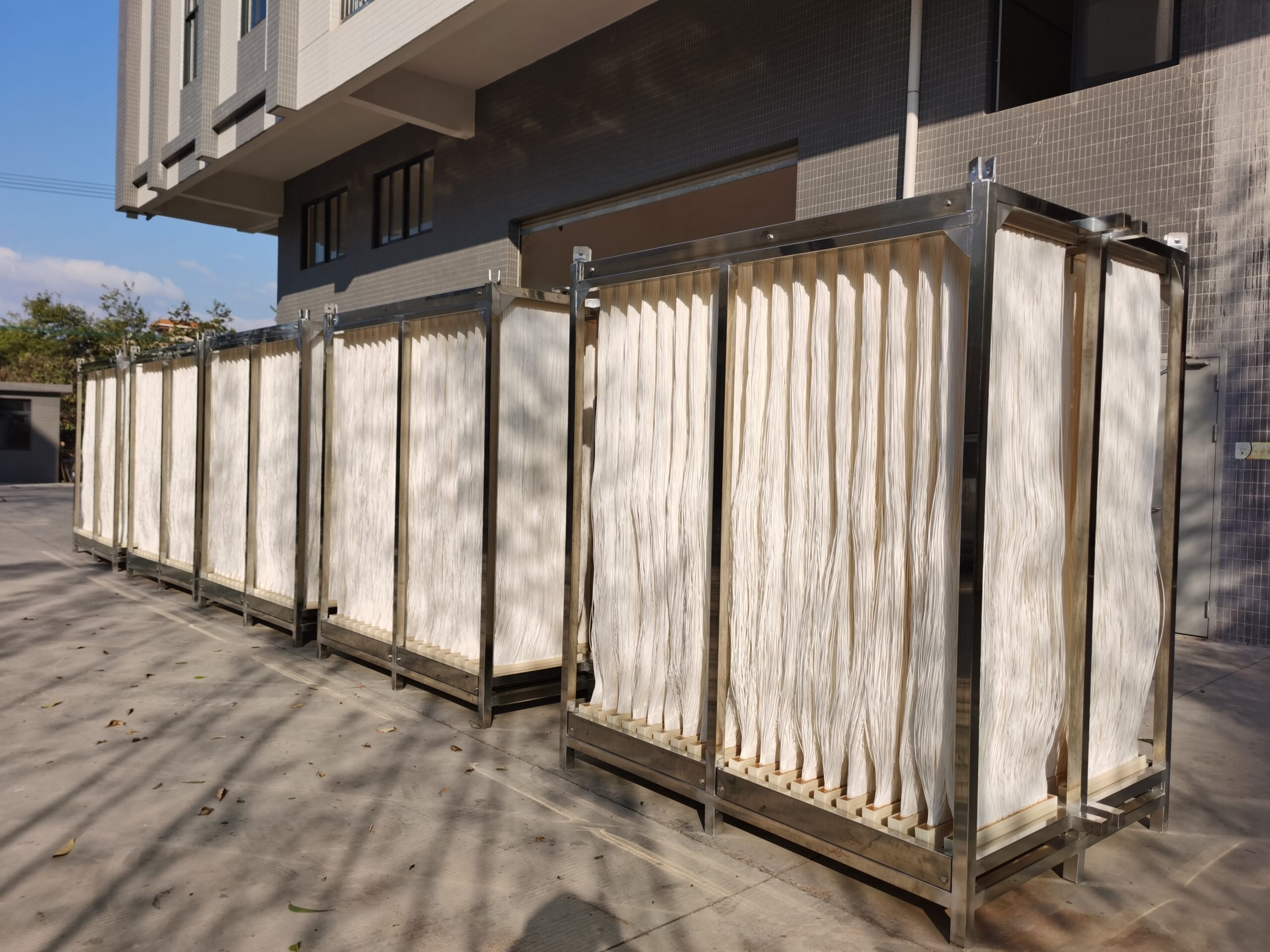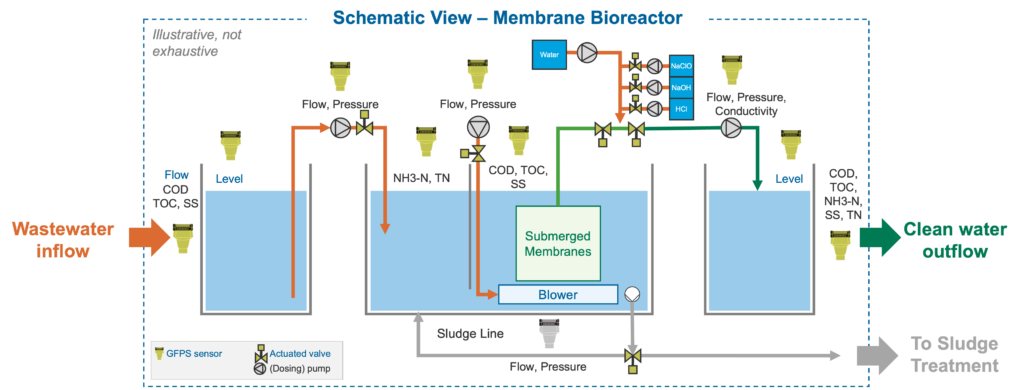The Advantages of Membrane Bioreactors in Sustainable Wastewater Administration
Membrane bioreactors (MBRs) represent a critical advancement in sustainable wastewater monitoring, successfully combining biological treatment with innovative membrane layer purification modern technology. As the need for sustainable options magnifies, exploring the complex advantages of MBRs might reveal unanticipated implications for the future of wastewater therapy systems.
Summary of Membrane Bioreactors
Membrane bioreactors (MBRs) represent a substantial innovation in wastewater therapy innovation, integrating organic deterioration with membrane layer filtering to improve the effectiveness of the treatment process. This ingenious system combines the benefits of traditional activated sludge procedures with membrane modern technology, enabling enhanced solid-liquid separation. MBRs make use of semi-permeable membrane layers to different treated water from biomass, leading to high-quality effluent that can be reused or safely released right into the environment.
The operational layout of MBRs usually entails a bioreactor where microorganisms damage down organic matter, followed by a membrane layer system that filterings system the combined liquor. This setup not only lessens the footprint of the therapy center however likewise permits greater biomass concentrations and minimized hydraulic retention times. Moreover, MBRs can treating a larger series of pollutants, consisting of microorganisms and nutrients, making them suitable for various applications, from local wastewater treatment to commercial effluent handling.
The combination of MBRs right into wastewater management systems is indicative of an expanding trend towards lasting and efficient practices in environmental design. Their ability to generate top quality effluent while reducing area demands settings MBR technology as a crucial gamer in contemporary wastewater therapy options.
Boosted Effluent High Quality

The membrane layer purification procedure serves as a physical obstacle, making it possible for the retention of microbes and particle matter, which adds to a clearer and cleaner effluent (Membrane Bioreactor). Moreover, MBRs run at greater biomass focus than standard activated sludge systems, promoting a lot more effective biodegradation of pollutants. This leads to a decrease in biochemical oxygen need (FIGURE) and total put on hold solids (TSS) degrees in the last effluent
Additionally, MBRs demonstrate exceptional efficiency in treating difficult wastewater structures, such as industrial effluents and wastewater with high nutrient loads. As an outcome, the effluent generated is typically of better, permitting for more adaptable disposal options and reduced ecological influence. Ultimately, the boosted effluent high quality accomplished via MBR modern technology underscores its crucial role ahead of time sustainable wastewater management techniques.
Water Reuse Opportunities
The top quality effluent generated by membrane layer bioreactors (MBRs) opens significant opportunities for redirected here water reuse in different applications. MBRs efficiently eliminate contaminants, consisting of pathogens, suspended solids, and raw material, leading to treated water that satisfies or surpasses governing criteria for reuse. This top quality enables for the execution of water reusing efforts across diverse industries.
One popular application remains in farming, where treated wastewater can be made use of for watering, promoting sustainable farming methods while conserving fresh water sources. Additionally, MBR-treated effluent can be made use of for industrial processes such as air conditioning, cleaning, and as a procedure water resource, significantly reducing the need for potable water in these procedures.
In metropolitan environments, MBRs assist in the use of redeemed water for landscape irrigation, toilet flushing, and other non-potable usages, adding to the general durability of water systems. In addition, the integration of MBR innovation in decentralized systems help in handling local water demands, particularly in water-scarce areas.
Minimized Environmental Effect
Just how can the adoption of membrane bioreactors (MBRs) contribute to a decreased environmental effect in wastewater administration? MBRs dramatically improve the treatment efficiency of wastewater while decreasing environmental disruptions. Membrane Bioreactor.
Additionally, MBRs operate at lower hydraulic retention times contrasted to conventional systems, causing smaller treatment plant footprints. This small layout decreases land use, thereby maintaining natural habitats and biodiversity. The process also produces less sludge than conventional approaches, minimizing disposal obstacles and lowering greenhouse gas exhausts related to sludge monitoring.
Furthermore, MBRs assist in the healing of important sources, such as water and nutrients, adding to a round economic climate. By making it possible for water reuse for watering or commercial processes, MBRs assist reduce freshwater scarcity, thus advertising sustainable water utilize practices. Inevitably, this content the fostering of MBR modern technology represents a significant stride towards reducing the environmental influence of wastewater management systems.
Economic Benefits of MBRs

Furthermore, MBRs assist in the manufacturing of top quality effluent, which can be reused for numerous applications, such as agricultural watering and commercial processes - Membrane Bioreactor. This reuse capability can significantly decrease water purchase costs, offering a financial motivation for industries facing rigid water regulations
The portable layout of MBR systems likewise leads to reduced land demands, which is especially valuable in city locations where realty is pricey. By minimizing area, sectors and municipalities can minimize land procurement and upkeep costs.
Furthermore, MBRs typically call for much less regular maintenance and have a longer life expectancy than standard systems, better adding to cost savings. In recap, the economic advantages of MBRs-- varying from reduced operational expenses to land financial savings and effluent reuse-- make them an engaging choice for lasting wastewater management, offering both long-lasting and prompt monetary advantages.
Final Thought
Membrane layer bioreactors represent a transformative approach to sustainable wastewater management, combining biological treatment with innovative membrane layer purification for exceptional effluent top quality. Their capacity for efficient pollutant removal helps with water reuse, therefore conserving important freshwater sources. In addition, MBRs add to minimized environmental effects through small layouts and lower sludge generation. Economic benefits better improve their viability, making MBRs an appealing service for attending to the challenges of wastewater therapy and promoting lasting resource administration.
Membrane layer bioreactors (MBRs) represent an essential improvement in lasting wastewater administration, effectively merging biological treatment with sophisticated membrane purification technology.Membrane layer bioreactors (MBRs) represent a considerable development official website in wastewater treatment modern technology, incorporating biological destruction with membrane layer purification to enhance the effectiveness of the treatment procedure.Achieving boosted effluent top quality is one of the most significant benefits of using membrane bioreactors (MBRs) in wastewater therapy.Furthermore, MBRs show superb efficiency in dealing with challenging wastewater structures, such as industrial effluents and wastewater with high nutrient loads.Integrating membrane bioreactors (MBRs) into wastewater management not just reduces ecological influence however likewise provides significant financial benefits.